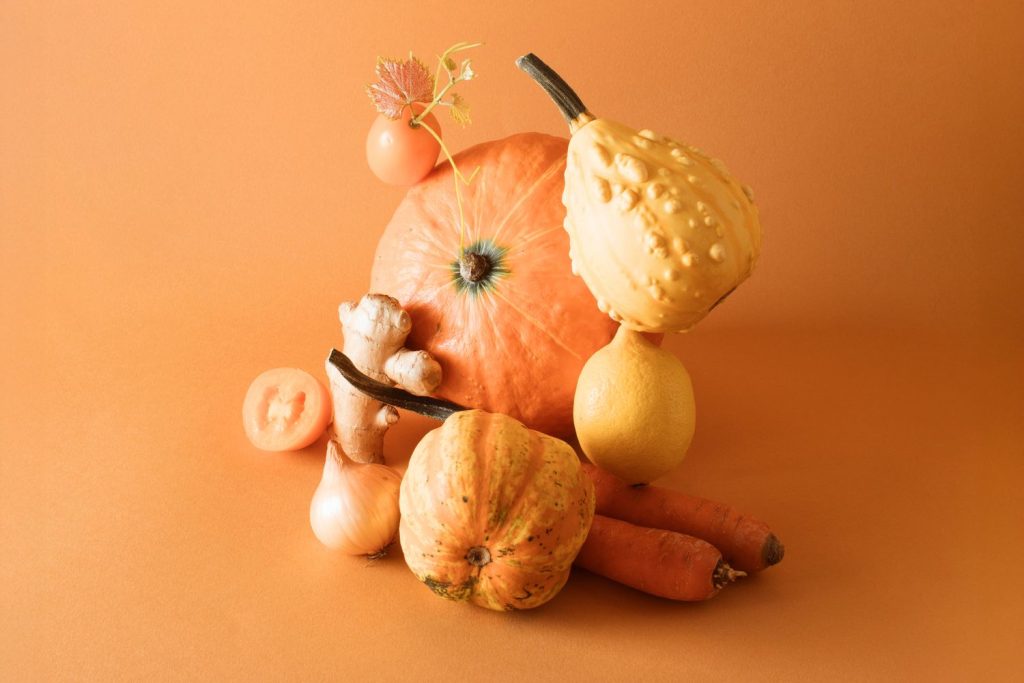:max_bytes(150000):strip_icc():format(jpeg)/healthiest-fall-food-GettyImages-1696093651-ac5399640cb742eaad1715047a1a3b1f.jpg)
Everyone’s looking to eat healthier these days, whether they’re following an anti-inflammatory diet, boosting their superfood intake, or just trying to stick with seasonal foods. And if you’re doing all three, you’re in luck—dietitians all recommend this classic fall food as an essential part of your autumn diet. No surprise: It’s pumpkin.
“Pumpkin gets a lot of attention every fall for a good reason,” says Jamie Mok, MS, RD, RYT, spokesperson for the Academy of Nutrition and Dietetics. “I recommend adding it to your diet, especially when it’s abundant in season, because it’s a nutritional powerhouse, and a versatile ingredient for a wide range of recipes.”
Ready to indulge in the flavor of the season (beyond your PSL obsession, of course)? Learn what benefits you can reap from pumpkin—and how to work it into your daily diet.
Health Benefits of Eating Pumpkin
There is a lot to love about this bona fide superfood. “If I had to choose one seasonal food for fall, it would be pumpkin or winter squash,” says Federica Amati, PhD, MPH, RNutr, head nutritionist at ZOE. ‘They are rich in fiber, potassium, vitamin C, and beta-carotene, which supports eye and immune health. They’re also affordable, versatile, and widely available during the season.” In fact, if you’re seeking out vitamin A, just a half cup of pumpkin puree can supply your entire day’s worth of vitamin A—and then some.
The pumpkin seeds also provide plenty of nutrients, so don’t toss those out! “Don’t forget the seeds, which are packed with protein, fiber, zinc, magnesium, and healthy fats,” Amati says.
While canned pumpkin puree is available year-round (and offers all of these same nutrients), go ahead and lean into the fresh pumpkin this fall. (It’s always a good idea to try to eat in season!) “Eating seasonally is the best way to enjoy fresh produce when it’s harvested at peak ripeness,” Mok says. “Seasonal produce packs the most flavor and nutritional value—vitamins, minerals, and antioxidants. By emphasizing seasonal ingredients, you naturally diversify your diet and reap the benefits of a wider variety of nutrients.”
How to Use Pumpkin in Your Cooking
One of the best benefits of pumpkin? You can use it in a slew of different recipes—in savory dishes like pastas and chili, or sweets like cookies or muffins. “I love how pumpkin can be enjoyed in both savory and sweet dishes,” Mok says. “You can roast it, add it to soups and salads, or mix it into baked goods and smoothies. I personally stock up on canned pumpkin every season and mix a couple of big spoonfuls into oatmeal—either cold overnight oats or cooked oatmeal—yogurt, or cottage cheese bowls.
Even if you aren’t making a pumpkin-forward baked good, like pumpkin pie or pumpkin bread, you can sneak pumpkin into many baking recipes. It’s a great replacement for butter, oil, or even eggs. To swap it in, use 1/4 cup of pumpkin puree in lieu of an egg, or have it replace the butter or oil in a one-to-one ratio.
Not a fan of pumpkin puree? The pumpkin’s seeds can add crunch to everything from salads to snacks—or even be swapped in for pine nuts in a pesto recipe.

